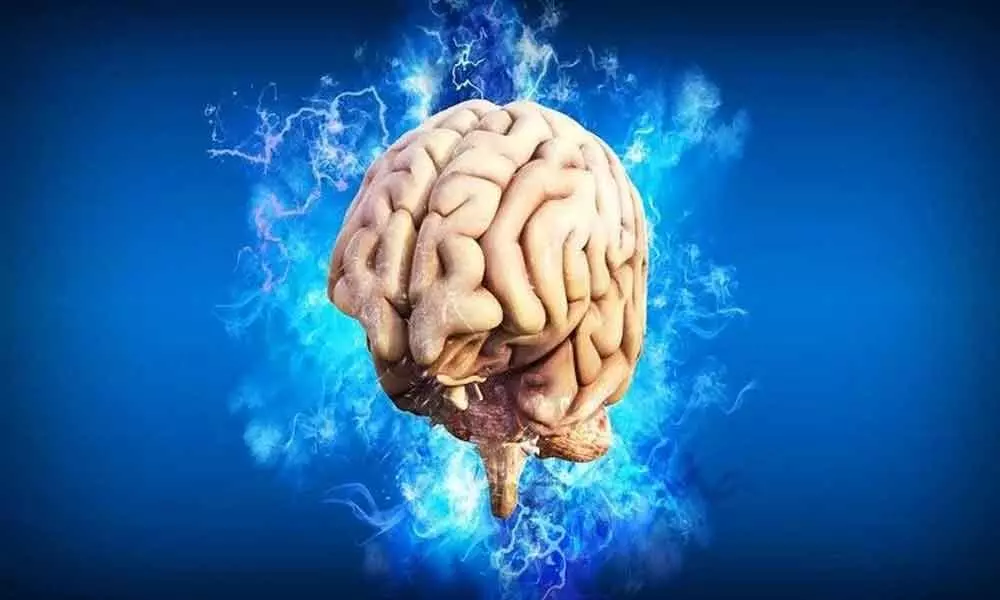Live
- Japan reports record-high flu cases since 1999
- Central Parliamentary Committee Inspects Polavaram Project Progress
- Anantha Lakshmi Int’l School celebrates Sankranti
- Mukkoti Ekadasi observed with religious fervour
- Officials instructed to solve land issues at once
- Alyssa Healy ready to keep wickets for Australia in Ashes series opener
- Illegal sand mining intensifies along Tungabhadra river
- Rain lashes part of Rajasthan, more in store today
- Kerala parents can now monitor their child's academic progress in state-run schools
- IT sector stands out in challenging week for Indian equities
Just In
Scientists discover eye exam for early diagnosis of Parkinson's


Scientists discover eye exam for early diagnosis of Parkinson
A simple eye exam combined with powerful artificial intelligence (AI) machine learning technology that could provide early detection of Parkinson's disease, suggest the findings of a recent study
A simple eye exam combined with powerful artificial intelligence (AI) machine learning technology that could provide early detection of Parkinson's disease, suggest the findings of a recent study. The research is being presented at the annual meeting of the Radiological Society of North America (RSNA).
Parkinson's disease is a progressive disorder of the central nervous system that affects millions of people worldwide. Diagnosis is typically based on symptoms like tremors, muscle stiffness, and impaired balance - an approach that has significant limitations.
"The issue with that method is that patients usually develop symptoms only after prolonged progression with a significant injury to dopamine brain neurons," said study lead author Maximillian Diaz, a biomedical engineering PhD student at the University of Florida in Gainesville, Florida. "This means that we are diagnosing patients late in the disease process."
Disease progression is characterised by nerve cell decay that thins the walls of the retina, the layer of tissue that lines the back of the eyeball. The disease also affects the microscopic blood vessels, or microvasculature, of the retina. These characteristics present an opportunity to leverage the power of AI to examine images of the eyes for signs of Parkinson's disease.
For the new study, Diaz collaborated with graduate student Jianqiao Tian and University of Florida neurologist Adolfo Ramirez-Zamora, M.D., under the direction of Ruogu Fang, PhD, director of the J. Crayton Pruitt Department of Biomedical Engineering's Smart Medical Informatics Learning and Evaluation Lab (SMILE).
The researchers deployed a type of AI called support vector machine (SVM) learning that has been around since 1989. Using pictures of the back of the eye from both patients with Parkinson's disease and control participants, they trained the SVM to detect signs on the images suggestive of disease.
The results indicated that the machine learning networks can classify Parkinson's disease based on retina vasculature, with the key features being smaller blood vessels. The proposed methods further support the idea that changes in brain physiology can be observed in the eye.
"The single most important finding of this study was that a brain disease was diagnosed with a basic picture of the eye," Diaz said. "This is very different from traditional approaches where to find a problem with the brain you look at different brain images."
Diaz noted that those traditional imaging approaches with MRI, CT, and nuclear medicine techniques can be very costly. In contrast, the new approach uses basic photography with equipment commonly available in eye clinics to get an image. The images can even be captured by a smartphone with a special lens.
"It's just a simple picture of the eye, you can have it done in less than a minute, and the cost of the equipment is much less than a CT or MRI machine," Diaz said. "If we can make this a yearly screening, then the hope is that we can catch more cases sooner, which can help us better understand the disease and find a cure or a way to slow the progression."
The approach may also have applications in identifying other diseases that affect the structure of the brain, such as Alzheimer's disease and multiple sclerosis, Diaz said.

© 2025 Hyderabad Media House Limited/The Hans India. All rights reserved. Powered by hocalwire.com






